When a natural disaster or power outage strikes, a generator can be a lifesaver, providing much-needed electricity to your home or business.
However, connecting a generator to your breaker box can be a complex and potentially dangerous task if not done properly.
In this blog post, we’ll guide you through the process of connecting a generator to your breaker box safely and efficiently.
Whether you’re a homeowner aiming to maintain power during outages or a business owner ensuring seamless operations, this guide equips you with the necessary knowledge and tools to get your generator up and running smoothly.
Can You Hook Up A Generator To A Breaker Box?
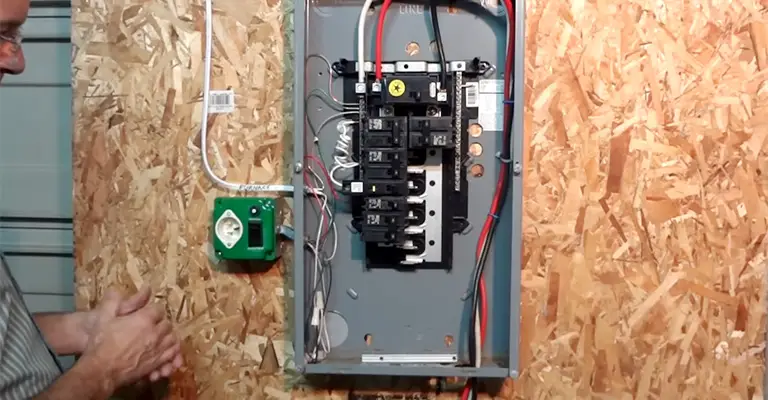
Yes, it is possible to wire a generator to a breaker box (also known as a load center).
However, it is important to note that connecting a generator to your breaker box should be done by a qualified electrician or someone with the appropriate knowledge and experience.
This is because working with electricity can be dangerous and can cause serious injury or damage if not done properly. Here is a short guide. To wire a generator to a breaker box, you will need to follow a few steps:
- Determine the type and size of generator that you need. Ensure the generator is compatible with your breaker box and has the necessary power output to meet your needs.
- Install a transfer switch. This device is installed between your generator and your breaker box and allows you to switch between your main power source and your generator safely and easily.
- Connect the generator to the transfer switch. This can typically be done using a heavy-duty extension cord or hardwiring the generator to the transfer switch.
- Turn off the main power to your home or business. This is an important safety precaution to ensure that you do not accidentally come into contact with live electrical wires.
- Connect the transfer switch to your breaker box. This is usually done using a heavy-duty power cord or by hardwiring the transfer switch to the breaker box.
- Turn on the generator and switch the transfer switch to the “generator” position. This will allow the generator to power your home or business.
Again, it is important to note that wiring a generator to a breaker box should only be done by a qualified electrician or someone with the necessary knowledge and experience.
If you are not comfortable or familiar with electrical work, it is best to hire a professional to handle the installation for you.
Step By Step Guide On How to Connect Portable Generator to Electrical Panel
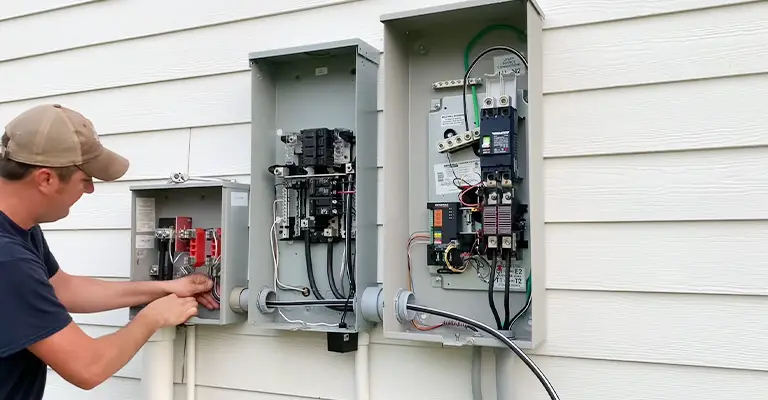
A portable generator might be a good choice if you live in an area that frequently experiences harsh weather conditions.
Every time your place experiences a power outage, you can use it as a temporary energy source. The process can, however, become tedious if you have to set up the generator repeatedly.
Knowing how to connect a portable generator to an electrical panel is important to prevent this situation. With less effort, you can switch on your alternative electrical source when the power goes out.
Tools You Need
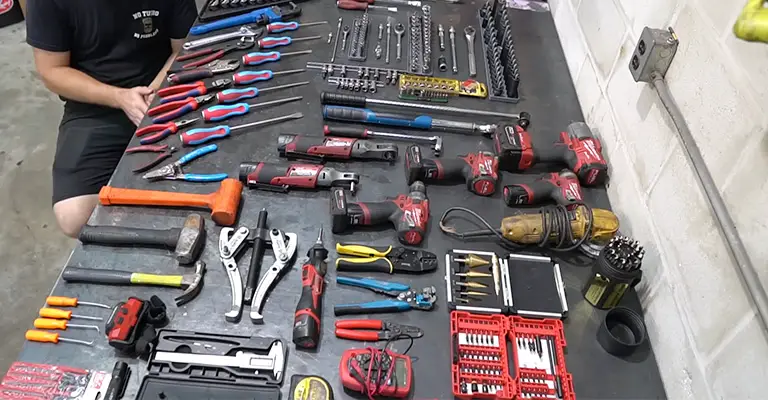
There is a possibility that the brand, amperage rating, and wire gauge will vary depending on the generator rating.
To demonstrate this procedure, I will use a 30-amp 240-volt generator. You will need these tools to install your own generator and home electrical connection.
- Wearing gloves and goggles is a safety precaution
- Screws
- Installation of breaker interlocks using an electric drill
- Taking out the stabs in the cover of the breaker box with a pair of pliers
- An inlet box for a generator connection that makes it easy to plug in
- For connecting a generator, use a double pole circuit breaker of 30 amps
- Connections to the inlet box and circuit breakers via conduit and ten-gauge outdoor electrical wire
- Suitable for connection of the generator to the home circuit, this cord is ten-gauge and four-wire
- Circuit breakers with interlock kits to enhance safety
Interlocks for circuit breakers come in lots of types. Where you want to connect your generator may determine what circuit breaker interlock kit you need.
Note: Install a 120-volt generator only if your electrical needs are small (less than 3000 Watts).
Before starting your work, there are several essential things you need to know.
- You must first ensure space in your breaker panel for the generator circuit.
- It is important to remember that any breaker interlock goes on the left side of the breaker closest to the user.
- Further, circuit breaker interlocks protect against hazards caused by two-way power supplies. Per safety codes, generators cannot be connected to an electrical panel without transfer switches.
- In modern times, connecting generators to electrical panels is an easy task that anyone with basic electrical knowledge can do. Nevertheless, if you are not comfortable handling electricity, the best course of action is to hire a professional.
Following the step-by-step guide below, you can hook up your generator to the panel if everything is clear.
Step 1: Remove the Cover Panel
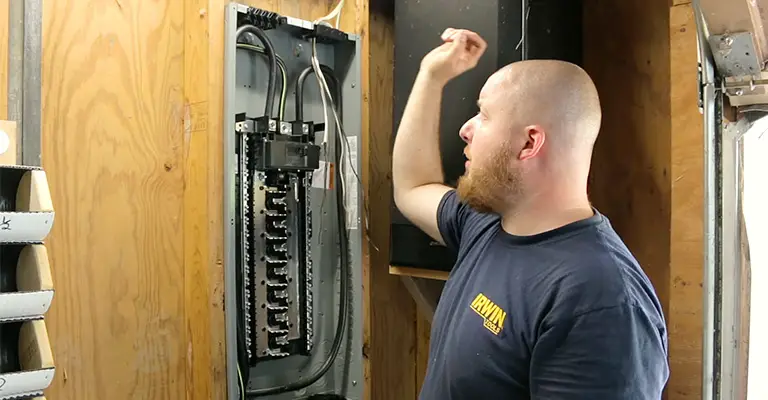
Ensure all devices connected to the circuit are turned off and unplugged before you begin work on your electrical system. Once you have shut down your circuits and main breaker panel, you are ready to move on.
This is to keep your devices safe from damage and prevent them from getting electrocuted by electricity. This is the final step in safely removing the panel cover. It is as simple as unscrewing all the screws that hold the cover in place.
Step 2: Install the Interlock Kit to the Panel
Install the interlock kit on the panel cover after removing the cover. You can use an electric drill to make the holes for your breaker interlock installation. After that, install the bolts and secure the kit to the panel cover.
As well as removing the circuit breaker cover, you can use the pliers to snap out the knock-out cover.
Step 3: Install the Power Inlet Box
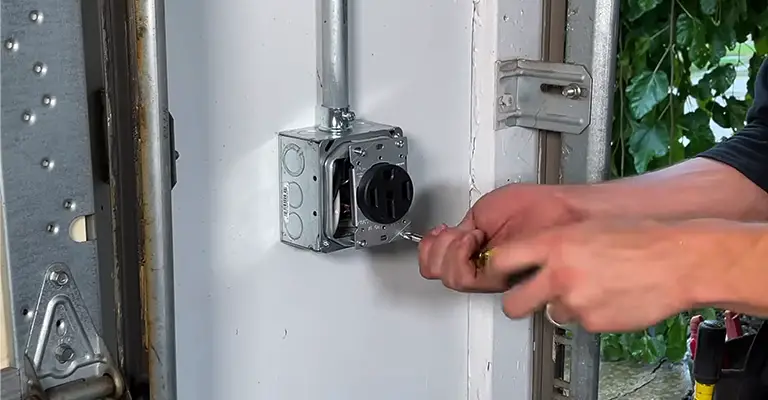
The first step in installing a power inlet box is to locate it in a place that is accessible and can be connected to the generator set easily. Ideally, you should drill a hole near your breaker panel to mount the power inlet box there.
For outdoor installations, a conduit can also provide additional wire protection. Put tapcon screws into the box and mount it to the wall.
Step 4: Start Wiring the Connections
Install the power inlet box and run the wire through the conduit to the panel breaker after it is installed.
There are usually two hot wires, two neutral wires, and one ground wire at the inlet of a power panel. If you are unsure whether you are wiring it correctly, you can search for a power inlet wiring diagram.
Note: If the power inlet box is made of metal, attach the ground wire to it.
Step 5: Install the Circuit breaker
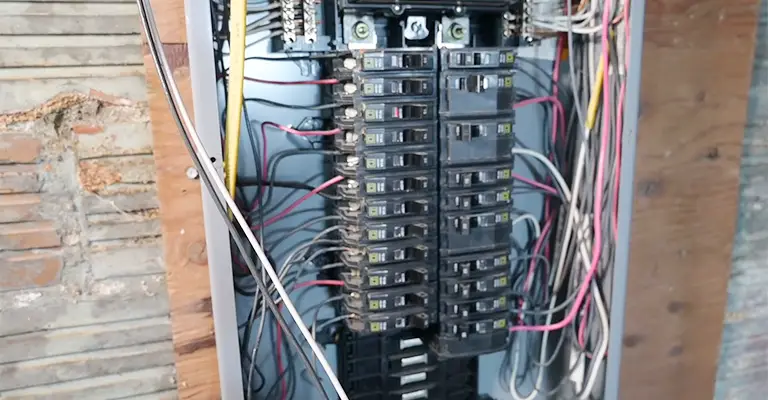
You need to connect the ground wire to the ground bus bar and the neutral wire to the neutral bus bar.
Connect the two hot wires to the circuit breaker and install them on the panel board for the generator circuit connection. You must also install the circuit breaker retaining bracket included in the interlock kit.
Step 6: Install the Cover Panel
You can now install the panel cover again since you have completed all the steps above correctly.
After you have screwed all sides of the panel cover, you have a ready generator connection. Testing your work for proper function is also a good idea.
Step 7: Time to Test Your Work
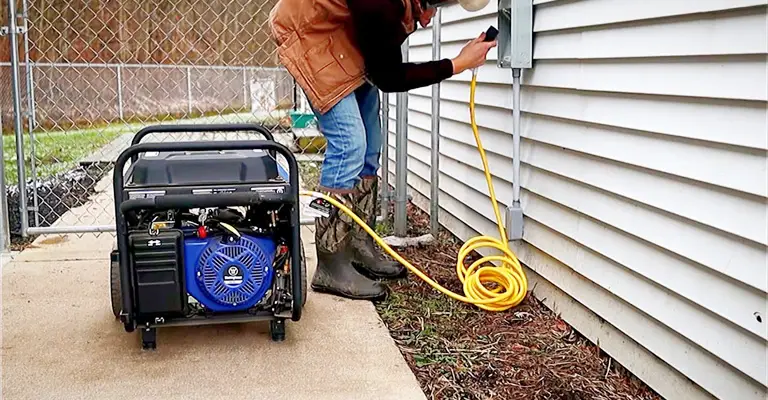
You will need to plug your generator set into the power inlet with the power cord or extension cord that came with it. Connect a power cord to the portable generator and switch on the circuit breaker built into the generator.
Having started your generator set, you can now check how many circuits your generator set can run by turning each one on individually.
Tips: Don’t turn on every circuit in your home until your generator set has been running for at least five minutes. A generator set load makes it ready to feed a home electrical circuit with electricity.
There are other uses for this installation guide than just setting up a generator to breaker box kit inside your house. As well as connecting your off-grid generator to your breaker outside your home helps you reduce your electric bill.
Never Do This
- It is not uncommon for people to use double male plugs to energize their homes during a power outage. This is dangerous.
- This is a violation of the electrical code.
- Almost everywhere, it is illegal.
- It poses a fire hazard. In general, the power generated by your generator exceeds the rating of the receptacle, wire, and breaker.
- Power company linemen can be shocked if you fail to disconnect your main breaker – and you will be sued.
- Easily getting shocked because of the exposed prongs of the male plug is possible.
Safety Measures
- To connect a portable generator to an electrical panel, it is important to understand the safety precautions involved. For example, locating the item outside the home may be necessary.
- To prevent injury from electric shock, it’s important to ensure your portable generator is not powering your home’s electrical equipment and that it’s grounded properly.
- Two ways exist for connecting a portable apparatus to a house’s electrical panel that will ensure safety and prevent damage to the electrical panel. An electrical sub-panel can be connected to the generator first. The sub-panel will match the house’s voltage by transforming the voltage.
- You can also fuse the box using a generator if you know how to hook it up to the fuse box correctly. Connecting a generator to a fuse box is safe because a short circuit will stop the flow of electricity. By connecting a transfer switch to the fuse box, a generator can be connected to the fuse box.
- To determine what type of generator you have and how to connect it to your electrical panel, it is a good idea to read the instructions that came with the item.
- Furthermore, the National Electrical Code (NEC) has specific rules regarding generators’ wiring and safety. When hiring a generator, it is essential to consider the NEC since it contains industry standards and practices.
Final Words
Knowing how to connect a portable generator to an electrical panel will be useful when a power interruption occurs at your place. The job is also simple and can be accomplished by someone with basic electrical knowledge.






